Most people take precautions in the sun to protect their skin but many may not realise how harmful UV radiation is to the eyes. There are 3 types of UV radiation, we are mainly concerned with UV-A and UV-B as UV-C is absorbed by the ozone layer. The other problem is exposure to UV radiation in environments where we do not expect it such as sunbed use or strong ground reflection from snow, water and sand.

Short bursts of high intensity UV ration can cause acute anterior eye problems, welders will complain of “arc eye” after suffering a flash. This results in acute photokeratitis and photoconjunctivitis which is essentially sunburn to the very sensitive tissues of the eyes and lids. Symptoms of intense pain, redness and inflammation follow after a few hours. But it’s not just welders that are at risk of acute problems, snowblindess is an extreme form of photokeratitis, t sometimes occurs in skiers and climbers who experience extreme UV levels due to high altitude conditions and very strong ground reflection – fresh snow can reflect up to 80 per cent of incident UV radiation.
For the rest of us, chronic UV exposure is more of a problem. Complications such as pterigium, cataract and age related macular degeneration are all linked to prolonged UV exposure. Furthermore, melanoma is the most common malignant tumour of the eyeball itself and the lids are a very common location for basal cell carcinomas.
It’s not clear how much UV exposure will cause damage, so when you spend time outside wear a quality pair of sun glasses and a wide brimmed hat.
Good quality sunglasses should:
- block out 99% to 100% of both UV-A and UV-B radiation;
- screen out 75% to 90% of visible light;
- have lenses that are perfectly matched in colour and free of distortion and imperfection;
- have lenses that are grey for proper colour recognition.
Finally, don’t forget protection for children and teenagers. They typically spend more time in the sun than adults.
At Jones & Murphy we have a wide range of high quality sunglasses from well known names that will not only give you the UV protection you need but also give you that great look for the summer! Why no pop in and try a few on.
Sources: American Optometric Association, World Health Organisation, RNIB

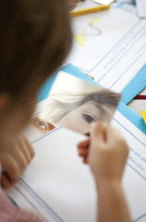 It is estimated that 1 million children will return to school this year with an undiagnosed vision problem. Poor eyesight can have a significant effect on children’s ability to learn and on their behaviour – yet often goes unrecognised by teachers, parents and by the children themselves. Children may not be aware of or may not be able to explain their vision difficulties and a parent or teacher may not notice any problems.
It is estimated that 1 million children will return to school this year with an undiagnosed vision problem. Poor eyesight can have a significant effect on children’s ability to learn and on their behaviour – yet often goes unrecognised by teachers, parents and by the children themselves. Children may not be aware of or may not be able to explain their vision difficulties and a parent or teacher may not notice any problems.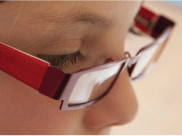 Sight Tests are free for all children under the age of 16. Parents can take their children along to a local optometrist or optician for a free NHS Sight Test. Optometrists and opticians in the community are qualified to examine the eyes of all children, paid for by the NHS. Help towards the cost of glasses is also available on the NHS for all children. Toddlers and young children do not need to be able to read, as an eye examination can be carried out using pictures.
Sight Tests are free for all children under the age of 16. Parents can take their children along to a local optometrist or optician for a free NHS Sight Test. Optometrists and opticians in the community are qualified to examine the eyes of all children, paid for by the NHS. Help towards the cost of glasses is also available on the NHS for all children. Toddlers and young children do not need to be able to read, as an eye examination can be carried out using pictures.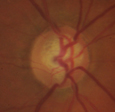 Glaucoma is the name given to a group of conditions in which the optic nerve suffers a characteristic form of damage at the back of the eye that is often associated with a raised level of intraocular pressure. It can cause irreversible vision loss if left untreated. Fortunately glaucoma is easily treated with eye drops if diagnosed early but despite this it is still one of the biggest causes of blindness in the developed World.
Glaucoma is the name given to a group of conditions in which the optic nerve suffers a characteristic form of damage at the back of the eye that is often associated with a raised level of intraocular pressure. It can cause irreversible vision loss if left untreated. Fortunately glaucoma is easily treated with eye drops if diagnosed early but despite this it is still one of the biggest causes of blindness in the developed World.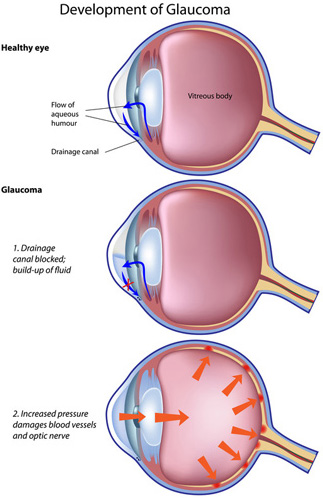
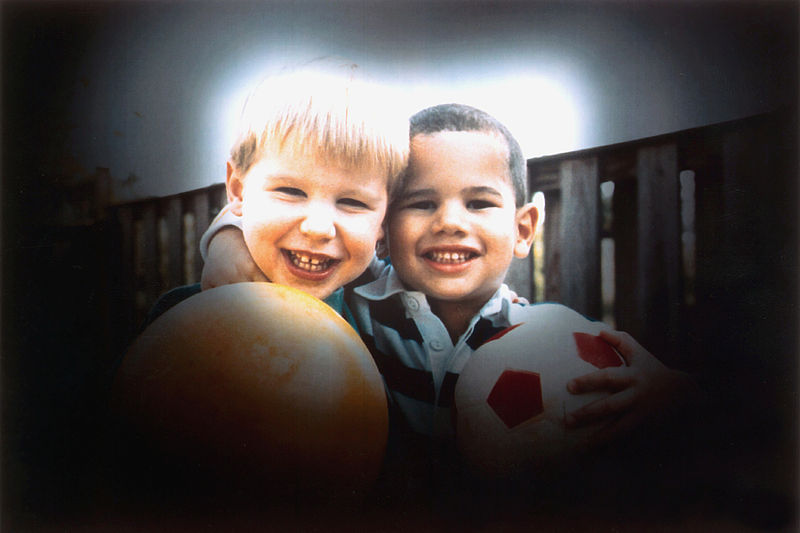 The optic nerve damage causes patchy loss of vision that varies in severity from patient to patient. Most patients with glaucoma are not aware of problems with their vision. This is because the damage that occurs with glaucoma has a slow time course and the central vision (for reading and recognising people) is only affected when glaucoma has advanced to a late stage.
The optic nerve damage causes patchy loss of vision that varies in severity from patient to patient. Most patients with glaucoma are not aware of problems with their vision. This is because the damage that occurs with glaucoma has a slow time course and the central vision (for reading and recognising people) is only affected when glaucoma has advanced to a late stage.